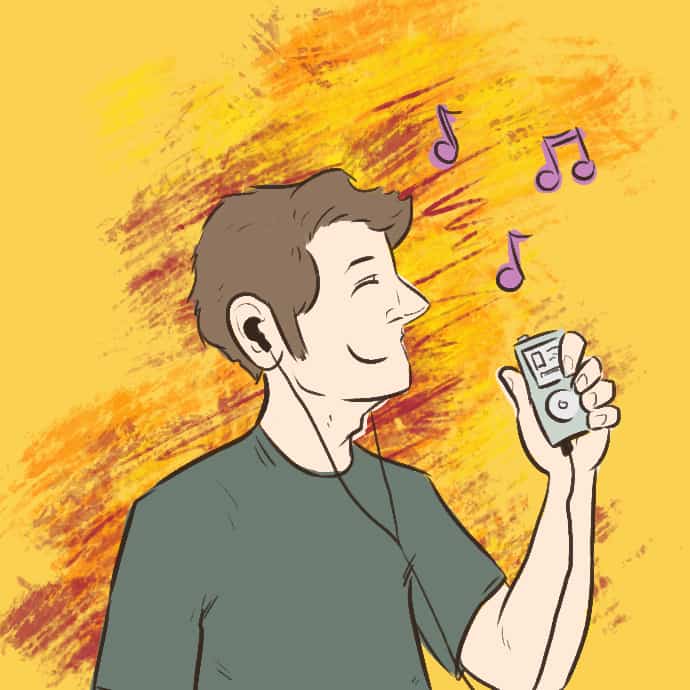The audience sensed something unusual about rapper Blake Carrington the moment he stepped out onto the Opera House stage. Rather than match the other headlining act, Ca$h Out, with the same themes of drugs, money, and women, Carrington chose to rap about something a bit closer to his heart.
“I’ve been all around the world… And I love to travel, so I want y’all to repeat after me,” Carrington exclaimed to the audience, flapping his arms about like an airplane. The rapper continued, “When I say a form of greeting in a different language, I want y’all to answer by saying, ‘Wuddup, doe’, got it?” The crowd nodded obediently, and the rapper began the chorus of his song, entitled “What’s Up, Doe?”
From this came the birth of a new sub-genre: travel-rap. Carrington carried on like this throughout the set, pausing briefly to remind us that he was our pilot; that his DJ was his co-pilot, and we had better buckle up, because turbulence was about to set in.
Travel-rap isn’t the only obscure sub-genre in the wide world of music. In fact, it appears as though each genre, whether it is rock, pop, or country, has its own offspring of weird children. Here at The Varsity, we’ve compiled a group of particularly obscure sub-genres so that you too can expand your repertoire of niche musical factoids. Wuddup, doe?
No Wave
Over the years, different types of ‘waves’ have been ascribed to different types of art movements. New wave encompassed the influx of synth-oriented music in the 80s, while vaporwave and chillwave have been used to describe various forms of notably relaxed electronic music. Rather than have another wave roll up onto the music industry’s shoreline, how about no wave at all.
No wave, an alternative form of punk music, came out of a New York-based arts movement in the late 1970s. The movement’s goal was to promote the rejection of record labels and to denounce any kind of consumerism whatsoever — which would help to explain why you’ve probably never heard of it.
With this sub-genre, move away from the jittery sounds of James White And The Blacks and up towards songs like Red Transistor’s “Flying Saucer 88”.
Red Transistor, “Flying Saucer 88”
Bmore
Along with The Wire, here’s something else you can associate with Baltimore: Bmore club music. Gritty and upbeat, Bmore music is a multi-ingredient stew that uses chunks of EDM, hip-hop, and a sprinkle of disco.
The sub-genre came to light in the late 1980s, taking elements from the contesting rave scene and hip-hop culture of Baltimore, and melding them into one. Bmore DJs and musicians often use samples from popular songs to be used as the backdrop for rap verses, or alternatively, low-wobbling dubstep baselines to hold down the groove. That being said, elements of disco and rap seem to come and go as they please, making Bmore often difficult to pinpoint.
Nevertheless, the underground style is consistently danceable, even twerk-able.
Kid Sister, “Big N Bad”
Goregrind
Chances are, you won’t want to listen to this. As the name suggests, goregrind is a mixture of gore-themed lyrics meeting with an intolerable sound of grinding guitar distortion. The sub-genre arose in the late 80s as an off-branch of death metal, and gained increasing popularity amongst metal aficionados for its low vocals and violent imagery. Unlike your average dose of death metal, goregrind distinguishes itself by striving away from politically oriented lyrics, and instead sets it’s focus upon blood, guts, and of course, murder.
The sound equivalent to The Human Centipede, goregrind is amongst other things traumatizing. Treat yourself to a taste of this sub-genre with the band Vomit Breath and their instant classic, “Grotesque Siamese Triplets”.
Vomit Breath, “Meticulous Dismemberment”
Cowpunk
Cowpunk, otherwise known as country punk, is worth listening to simply because of its name alone. In fact, cowpunk encompasses many recognizable artists that you may not have known to even be cowpunk in the first place. The Sadies, Wanda Jackson, and the infamous Billy Bob Thornton are all members of the cowpunk sub-genre, a style that dates back as far as the late 70s. This genre came about through punk bands that covered their favourite country tunes, and likewise, country singers who covered their favourite punk jams. Eventually, bands started forming with the intention of being both country and punk, thus forming the exceptionally well-named fusion genre, cowpunk. Moo.
The Cramps, “Human Fly”


